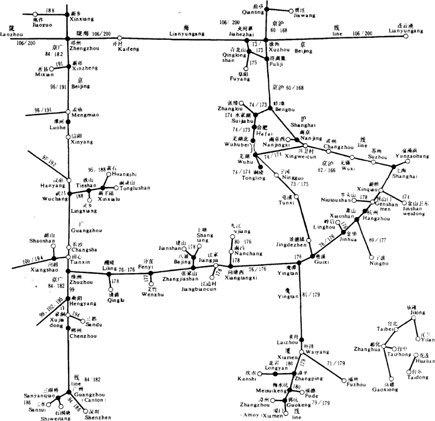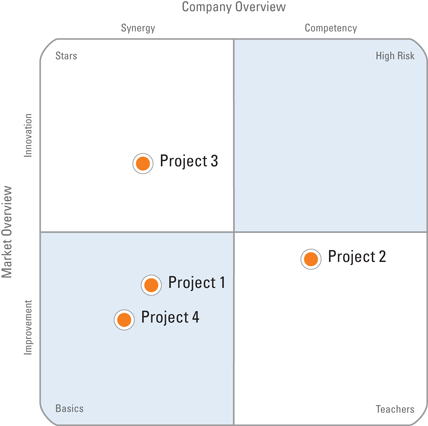Figure 2-1: Train timetable.
Two examples
I’d like to show you two examples which illustrate effective visualisation. They are effective because they provide associations and insights that are not possible with description alone. The objects in the figures quickly allow the viewer to notice associations.
Figure 2-1 (taken from: www.aattc.org.au/Times_December_1999W.pdf
) shows a rail timetable from 1985 in the People’s Republic of China. Edward Tufte describes it in his book Envisioning Information as a clever multifunctional combination of a map and data table. The diagram is a mixture of route map and index. The numbers in the figure refer to pages of the 200-page timetable catalogue so the reader can look up precise departure times. It also provides a complete geographical overview of all destinations and estimates of distance.

However, sometimes visualisation also needs additional clarification in the form of text, at least when the visualisation has not been produced by you yourself.
Figure 2-2 displays an ‘innovation portfolio’, a method allowing innovative projects to be evaluated from market and business perspectives. The diagram enables you to see at a glance the differences between projects and makes it easier to decide which projects should be followed up.
Figure 2-2: Innovation portfolio.

Visualising Information as a Core Skill
You are aware of it every day: the plethora of information and its complexity are increasing all the time. And yet you have to deal with it somehow. This makes the ability to visualise information, thereby allowing the brain to assimilate it easily, comprehensively and efficiently, a core skill for modern brain workers.
Linguistic training (learning the alphabet) is an essential element of our educational system. Linguistic competence denotes the ability to make sense of written or verbal language. Some researchers believe that not just linguistic competence but also visual literacy needs to be taught. Visual literacy is the ability to assess, apply and generate visual representations.
Of course, you can present information graphically in any way you like. But there is already a host of visualisation methods, which have been continually improved over many years, to help you.
